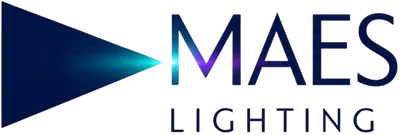
Lux vs. Lumens: Key Lighting Metrics Explained | Maes Lighting
Lighting metrics like lux and lumens are vital for choosing the right illumination for commercial, industrial, or hazardous spaces. These terms often confuse buyers, yet they’re essential for achieving optimal brightness and efficiency. At Maes Lighting, we provide high-quality LED solutions, including explosion-proof and NSF-rated lighting, to meet diverse needs. This guide explains the difference between lux and lumens, their practical applications, and how to select the best lighting for your environment.
Understanding Lumens: Measuring Total Light Output
Lumens quantify the total visible light emitted by a source, also known as luminous flux. This metric reflects a light’s overall brightness, regardless of where the light is directed. For instance, a fixture with 2000 lumens is brighter than one with 1000 lumens, making lumens a key indicator for comparing light sources like LEDs and fluorescents.
The Importance of Lumens
Lumens help you gauge whether a light source provides sufficient brightness for a space. Our IR7 Series LED High Bay lights deliver high-lumen output, perfect for illuminating large industrial areas like warehouses. According to the U.S. Department of Energy, LEDs offer more lumens per watt than traditional bulbs, boosting efficiency.
How Lumens Are Measured
Lumens are calculated using an integrating sphere, which captures light emitted in all directions. This method ensures accurate comparisons across fixtures. For general lighting, aim for 800–1000 lumens per square meter in spaces like offices or workshops.
Understanding Lux: Measuring Light Intensity
Lux measures the intensity of light on a specific surface, defined as one lumen per square meter. Unlike lumens, lux considers the area and distance from the light source. For example, 1000 lumens spread over 1 square meter equals 1000 lux, but over 10 square meters, it drops to 100 lux. Lux is crucial for determining how well-lit a surface appears.
The Importance of Lux
Lux is essential for task-specific lighting. Workspaces requiring precision, like manufacturing lines, need 500–1000 lux, while hallways may only need 100 lux. Our NSF-rated LED lights provide high lux levels for food processing environments, ensuring hygiene and visibility. The Illuminating Engineering Society offers lux guidelines for various applications.
How Lux Is Measured
Lux is measured with a light meter, which assesses illuminance on a surface. The closer the surface is to the light source, the higher the lux, as light disperses less. Always check lux ratings at specified distances, such as “1000 lux at 2 meters,” to ensure accuracy.
Lux vs. Lumens: A Clear Comparison
Lumens and lux serve different purposes in lighting design:
Lumens: Total light output, perfect for comparing overall brightness.
Lux: Light intensity on a surface, ideal for assessing task suitability.
For instance, a vapor-tight LED fixture with 6000 lumens might deliver 600 lux on a workbench 2 meters away but only 60 lux over a larger area. Use lumens to choose a light source and lux to ensure proper surface illumination.
Applying Lux and Lumens in Real-World Scenarios
Knowing how to use lux and lumens ensures your lighting meets specific needs. Here’s how these metrics apply in different settings:
Hazardous and Industrial Areas
In hazardous locations like refineries, high-lumen explosion-proof LEDs ensure safety and visibility. Our explosion-proof lighting provides consistent lux levels to meet OSHA standards. Heavy industrial tasks often require 800–1000 lux for optimal performance.
Commercial and Retail Spaces
Retail environments need 500–1000 lux to showcase products effectively, which our LED floodlights can achieve. Offices typically require 300–500 lux to reduce eye strain during computer work, ensuring employee comfort.
Outdoor and Specialty Applications
Outdoor spaces like parking lots need 100–200 lux for safety. Our LED linear lights offer high-lumen output for wide coverage. In specialty settings like cleanrooms, lux ensures precise surface brightness for quality control.
Selecting the Right Lighting: A Step-by-Step Guide
To choose the best lighting, follow these steps:
Identify Lux Needs: Use industry standards (e.g., 500 lux for offices, 1000 lux for detailed tasks).
Calculate Lumen Requirements: Multiply the desired lux by the area in square meters. For a 20m² workshop needing 800 lux, you’ll need 16,000 lumens.
Choose the Right Fixture: Opt for efficient LEDs like our full LED collection.
Account for Distance and Beam Angle: Ensure lux ratings align with your installation height and coverage area.
For tailored advice, reach out to Maes Lighting at (866) 860-6399 for a custom lighting plan.
Conclusion
Mastering lux and lumens allows you to select lighting that enhances functionality and efficiency. Lumens measure total brightness, while lux ensures the right intensity for specific tasks. Whether you’re illuminating a hazardous area, office, or outdoor space, Maes Lighting provides top-tier LED solutions to meet your needs. Explore our range and illuminate your space with precision.



